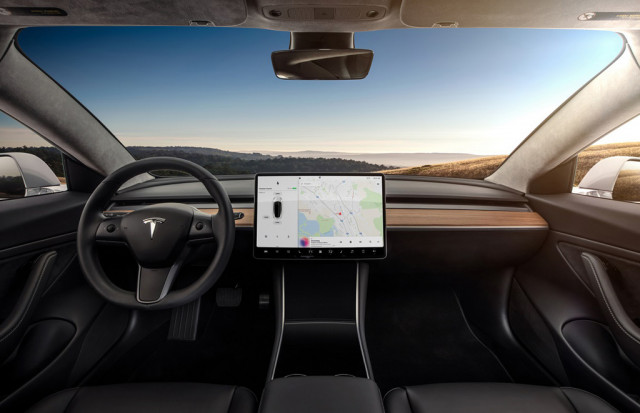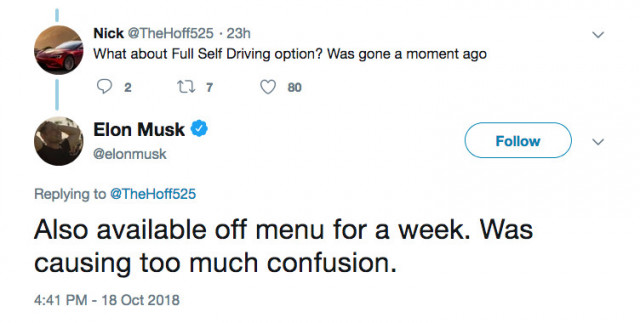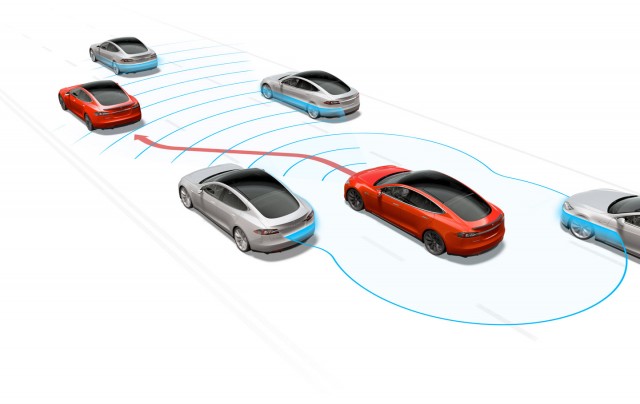Follow Bengt

2018 Tesla Model 3
Friday marked exactly two years since Tesla announced that every one of its cars was being produced with the hardware needed for Full Self-Driving.
Friday was also the first full day that Tesla removed the option from its configurator—at the same time that it introduced a new $45k Model 3 Mid Range, effectively splitting the difference between the much-anticipated Model 3 Standard Range and the discontinued rear-wheel-drive Long Range.
DON’T MISS: Teslas to get new self-driving, Autopilot chip in spring 2019
CEO Elon Musk quickly confirmed the change Thursday, via Twitter, describing the Full Self-Driving feature as “available off menu for a week,” and describing it as “causing too much confusion.”

@elonmusk confirmation of Full Self Driving removal from configurator
Full Self-Driving has been a $3,000 option in addition to the Enhanced Autopilot option that costs $5,000 at the time of purchase or $6,000 later. The company declined to comment to Green Car Reports when asked for a tally of how many vehicles it has sold with the Full Self-Driving option.
All Tesla models currently come with the hardware needed for Full Self-Driving capability, with the exception of a new, faster Autopilot chip that is due in spring 2019 and is required to activate the capability. When the functionality is available it can be provided via an over-the-air update.
CHECK OUT: Tesla to roll out new version of Autopilot
The hardware suite includes 8 surround cameras that can see 820 feet, 12 updated ultrasonic sensors, forward-facing radar with enhanced processing, and an onboard computer with 40 times the processing power of the previous one. It does not include the lidar hardware that some other automakers deem essential for autonomous-vehicle features.

Tesla Autopilot sensor system
Tesla commented that the option was removed from its configurator simply to streamline the purchase process, and clarified that the removal doesn’t reflect any change in plans to enable it.
The feature itself may have been scaled back a bit from earlier ambition, though. “All you will need to do is get in and tell your car where to go,” said a description of the feature on Tesla’s site, which remains up today. “Your Tesla will figure out the optimal route, navigate urban streets (even without lane markings), manage complex intersections with traffic lights, stop signs and roundabouts, and handle densely packed freeways with cars moving at high speed.”
READ MORE: Consumer Reports ranks Tesla Autopilot second among self-driving systems
Don’t expect quite that level with the launch of the feature. In the meantime, "on-ramp to off-ramp" enhancements, among others, are being made part of Autopilot. And earlier in the week, Musk confirmed that a future version of the Summon feature, which allows the vehicle to park at low speed automatically, would use Autopilot’s cameras.
If the expanded capabilities of Full Self-Driving Mode are never fully approved by regulators, owners may have to be happy with a few added features. Tesla clearly lays out that risk: “Please note that Self-Driving functionality is dependent upon extensive software validation and regulatory approval, which may vary widely by jurisdiction.” In other words, make your investment in the future, but you might not see your return.
UPDATE: This represents a clarification of "on-ramp to off-ramp" functionality as part of Autopilot, not Full Self-Driving.